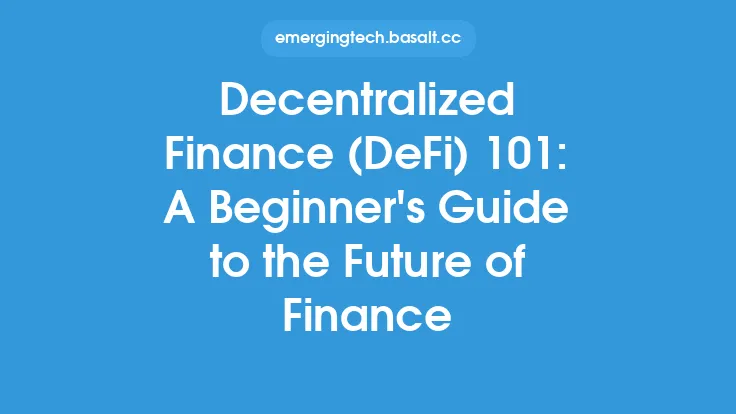Getting started with blockchain can seem daunting, especially for those without a background in computer science or cryptography. However, understanding the basics of blockchain is essential for anyone looking to explore this innovative technology. In this guide, we will break down the fundamental concepts of blockchain, providing a comprehensive overview of the key components, principles, and terminology.
Introduction to Blockchain Fundamentals
Blockchain is a decentralized, digital ledger that records transactions across a network of computers. It is the underlying technology behind cryptocurrencies such as Bitcoin and Ethereum, but its applications extend far beyond digital currency. At its core, blockchain is a system for securely and transparently storing and transmitting data. It achieves this through a combination of advanced cryptography, a network of nodes, and a consensus mechanism.
Key Components of Blockchain
There are several key components that make up a blockchain system. These include:
- Blocks: A block is a collection of transactions, such as the transfer of cryptocurrency or the execution of a smart contract. Each block is given a unique code, called a "hash," that connects it to the previous block, creating a chain.
- Chain: The chain is the sequence of blocks, each linked to the previous one through their hashes. This creates a permanent and unalterable record of all transactions that have taken place on the network.
- Network: The network refers to the collection of computers, or nodes, that are connected to the blockchain. Each node has a copy of the blockchain, which is updated as new blocks are added.
- Consensus Mechanism: This is the process by which the nodes on the network agree on the state of the blockchain. The most common consensus mechanisms are Proof of Work (PoW) and Proof of Stake (PoS).
How Blockchain Transactions Work
When a new transaction is made on a blockchain, it is broadcast to the network of nodes. The transaction is then verified by special nodes called miners, who compete to solve a complex mathematical puzzle. The first miner to solve the puzzle gets to add a new block of transactions to the blockchain and is rewarded with a certain amount of cryptocurrency. This process is known as mining.
Once a block is added to the blockchain, the nodes on the network update their copies of the blockchain to reflect the new block. This ensures that everyone has the same version of the blockchain, and it prevents anyone from altering the blockchain without being detected.
Blockchain Security
One of the key benefits of blockchain is its security. The use of advanced cryptography and a decentralized network makes it virtually impossible for a single entity to alter the blockchain. Each block is linked to the previous one through its hash, creating a permanent and unalterable record. If someone tried to alter a block, they would have to recalculate the hashes for all the blocks that come after it, which would require an enormous amount of computational power.
Additionally, the consensus mechanism ensures that the nodes on the network agree on the state of the blockchain, making it difficult for a single entity to manipulate the blockchain.
Types of Blockchain
There are several types of blockchain, each with its own unique characteristics. These include:
- Public Blockchain: A public blockchain is a blockchain that is open to the public, such as Bitcoin or Ethereum. Anyone can join the network, read the blockchain, and make transactions.
- Private Blockchain: A private blockchain is a blockchain that is restricted to a specific group of users, such as a company or organization. Only authorized users can join the network, read the blockchain, and make transactions.
- Consortium Blockchain: A consortium blockchain is a blockchain that is controlled by a group of organizations, rather than a single entity. This type of blockchain is often used in industries such as finance and healthcare.
Real-World Applications of Blockchain
While blockchain is often associated with cryptocurrency, its applications extend far beyond digital currency. Some real-world applications of blockchain include:
- Supply Chain Management: Blockchain can be used to track the movement of goods through a supply chain, ensuring that products are authentic and have not been tampered with.
- Smart Contracts: Blockchain can be used to create smart contracts, which are self-executing contracts with the terms of the agreement written directly into lines of code.
- Identity Verification: Blockchain can be used to create secure and decentralized systems for identity verification, such as passports and driver's licenses.
Conclusion
In conclusion, blockchain is a powerful and innovative technology that has the potential to revolutionize the way we store and transmit data. By understanding the basics of blockchain, including its key components, principles, and terminology, individuals can begin to explore the many applications and uses of this technology. Whether you are interested in cryptocurrency, supply chain management, or identity verification, blockchain has something to offer. As the technology continues to evolve and improve, it is likely that we will see even more innovative applications of blockchain in the future.





